Riding a motorcycle with sidecar, something special
I have been riding motorcycles for 60 years, since I was 15. I include my moped years, because internationally speaking a moped is just a motorcycle. I have been collecting stamps a bit longer, about 65 years. Over the years, I have started collecting also motorcycles on stamps as a by-catch. Now only up to and including the year 1985 (100 years of motorcycle). In the years that followed, a lot of junk was released purely for trade and not for the mail. I have been riding motorcycles with sidecar since 1980. First with a BMW R45 with MZ sidecar.
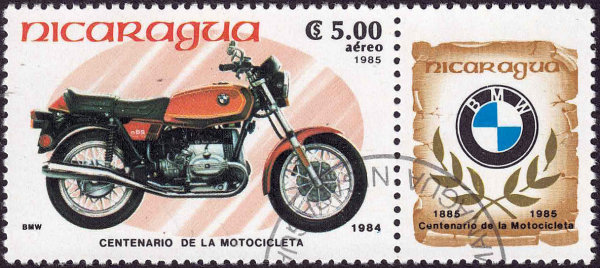
After that with a Moto Guzzi California 2 with EML conversion and sidecar. And in the winter (because of road salt) with a factory MZ sidecar combination.
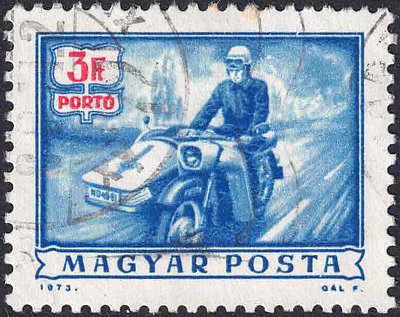
A factory MZ sidecar combination
Since 2000 with a Moto Guzzi California 1100 C(arburettor) with the same EML sidecar and modified conversion kit. I have done most of the conversion from one Guzzi to the other by my myself.
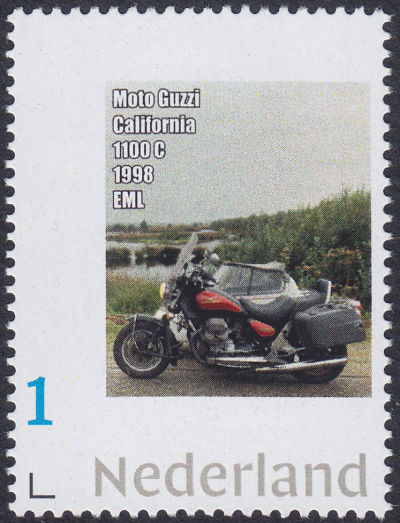
EML is a Dutch sidecar manufacturer. The abbreviation EML stands for EigenMakelij, which means something like "Produced by Myself" (free translation), chosen becasue they make almost all parts inhouse. In total I have riden around 400.000 km with these sidecar combinations.
What's so special about a motorcycle with sidecar that I'm going to bother the reader with it? There are lots of three-wheeled motorcycles, or three-wheeled cars if you prefer. The first motorized vehicle with 3 wheels was the Cugnot steam engine from 1769. It was intended as military vehicle and had 2 wheels at the back and 1 at the front.
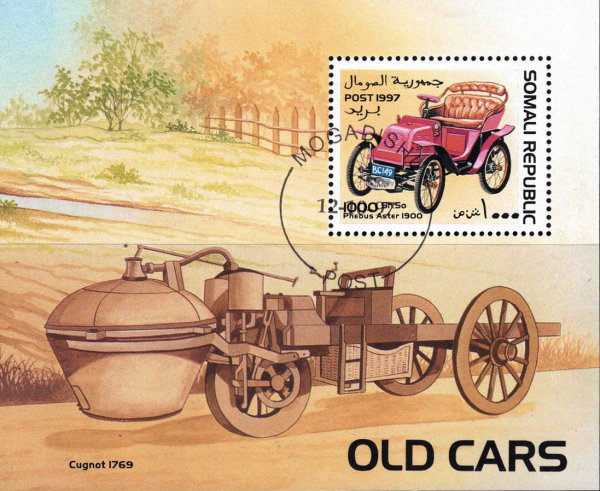
The first car, the Benz, was also a three-wheeler, with 2 wheels in the back and 1 in the front.
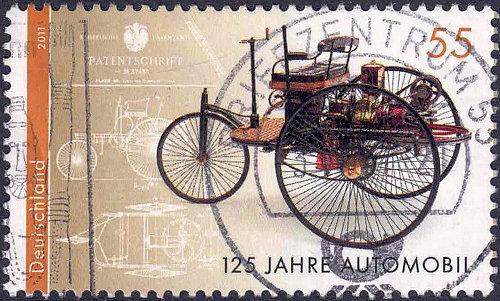
The De Dion Bouton was a very popular three-wheeler in the early years of the motorcycle.

All predecessors of the present trikes, which most times also have 2 wheels in the back and 1 in the front.
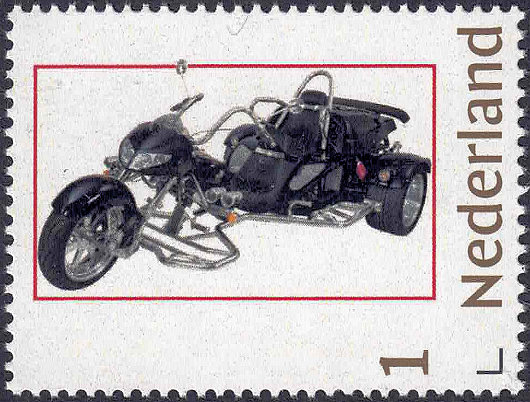
All these tricycles are symmetrical. Both rear wheels are driven. The tricycle is always upright and you steer it with the handlebars. And that's the difference with a sidecar. A sidecar combination is an ordinary motorcycle to which a sidecar is mounted, on the left side if you drive on the left, or on the right side if you drive on the right. And that is not symmetrical. Almost always only the rear wheel of the original motorcycle is driven. Only some factory sidecar combinations from the Eastern Bloc and China are different, as they often have a driven sidecar wheel.
First something about the steering of a normal motorcycle. You largely control this with the handlebars at low speeds. At higher speeds you steer it with your body. If you shift your body weight slightly to the right, the motorcycle will tilt and automatically make a right turn.
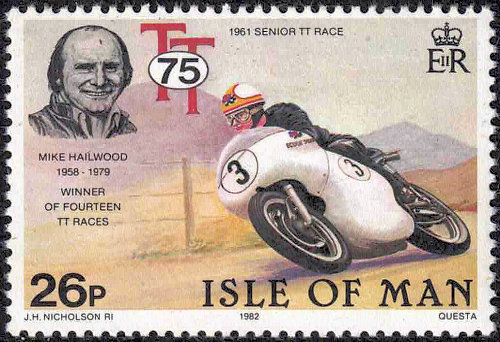
And the same applies to the left, but the other way around. You see this to an extreme with road racers. They hang far off on the side they want to go to. At the same time, they try to keep the motorcycle upright as much as possible, otherwise they will slide and go down.
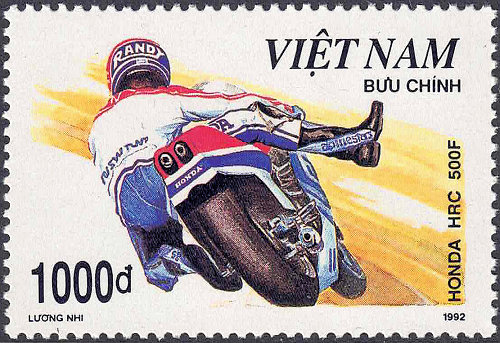
A sidecar normally always stands upright on its wheels. Shifting your body weight doesn't change that; the combination remains upright. Making a turn by shifting your body weight will not work. But instead there are many other options available.
Trail
The fact that a motorcycle wants to drive straight ahead in a stable manner without swaying like crazy is due to the so-called trail (in Dutch: naloop). This is the same with a normal bicycle. The trail is the distance between the intersection of the line through the pivot point of the front fork with the road surface and the point of contact of the front wheel with the road surface.
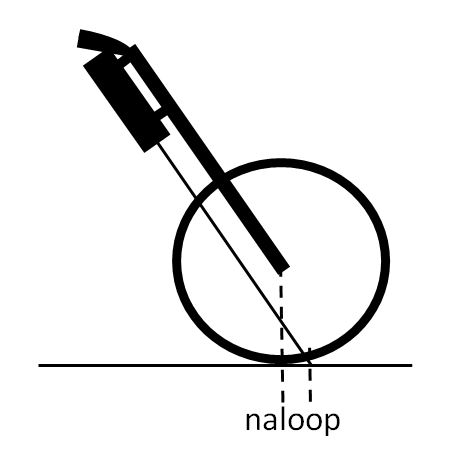
The larger the trail, the more the (motor)bike wants to drive straight ahead. You steer with your body and that is easy. But that is not possible with a sidecar. You will have to use the handlebars and that will be very difficult with a large trail, what makes that the vehicle only wants to go straight. Therefore the trail must be shortened. This is usually done with so-called swingarm front forks. This makes that the trail is shorter than standard or even variable. And with less trail, steering becomes much easier.
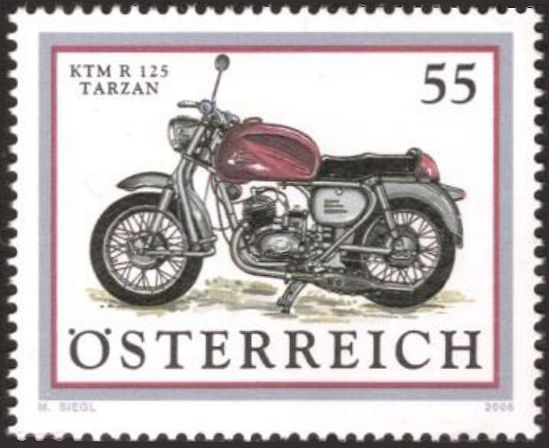
A solo motorcycle with swingarm front forks
Toe-in
In the Netherlands, a sidecar is attached to the right side of the motorcycle. I don't speak about a left-hand sidecar, that's for countries where people drive on the left and then the whole story is the other way round. When the motorcycle is riding, the sidecar hangs on the side and acts like a brake. This means that without any further provisions the sidecar combination always wants to make a right turn. To compensate for this, the sidecar wheel is mounted slightly diagonally towards the motorcycle. That's called toe-in (in Dutch: toespoor).

Lean out
To further compensate for the sidecar pulling to the right, the motorcycle is not completely upright, but slightly at an angle, inclined to the left. That's called lean out. This also causes the motorcycle to ride slightly to the left.
The lean out and toe-in together must be adjusted in such a way that the complete sidecar drives smoothly and without problems straight ahead at a certain speed, for example 100 km/h. The right adjustment is different for every sidecar combination.
But it will not be possible to always drive straight, we also need to make bends. And his requires more. At low speeds, steering is done with the handlebars only. At higher speeds it is partly controlled by the handlebars and the small trail makes this fairly easy. But there are methods that make it easier.
Braking
The most common braking system is:
- a single or double disc brake on the front wheel and
- linked brakes on the rear wheel and the sidecar wheel.
If you brake with the front brake, the sidecar will easily enter a left bend. If you brake with the linked rear and sidecar brakes, the sidecar will easily enter a right bend.
Throttle
When you open the throttle to accelerate, the motorcycle wants to go to the right, because the inertia of the sidecar mass makes that the sidecar lags behind.
When you close the throttle, the motorcycle slows down. The sidecar still wants to move forward due to its inertia. On balance, the motorcycle then easily enters a bend to the left.
Going through a bend with a sidecar combination is therefore the total of steering, whether or not to accelerate and whether or not to brake. Completely different from riding a solo motorcycle.
There are only a few thousand sidecar combinations in the Netherlands. But most of them ride a lot of kilometers, so you can meet them regularly. Then have a look whether the rider does more than just steer. Whether or not you brake and/or accelerate, a sidecar will never ride at constant speed on a winding track. Therefore it will not be possible to use cruise control.
The excesses
You ride with the steering wheel, throttle and brakes. And that doesn't go automatically, and not always goes well. When you make a turn to the right, the pressure on the sidecar wheel decreases due to centrifugal force. If you go too sharply to the right, the sidecar wheel will rise. If it rises too far, things go wrong. In that case correction is only possible by stopping steering and continuing straight ahead. But that is not always possible, after all you started a to make a bend for a reason. For inexperienced sidecar drivers this often ends in a collision or a dive into a ditch.
When you turn to the left the situation is different. The nose of the sidecar is subjected to downward pressure. The rear wheel of the motorcycle wants to rise into the air. If the nose of the sidecar dips too far and hits the road surface, the entire combination will roll over.
In both cases it helps to move the body of the motorcycle driver and possibly the passenger in the sidecar a bit, to move it to the right (to keep the sidecar wheel on the ground) or to the left (to keep the rear wheel on the ground). In road race at high speeds this results in true acrobatics.
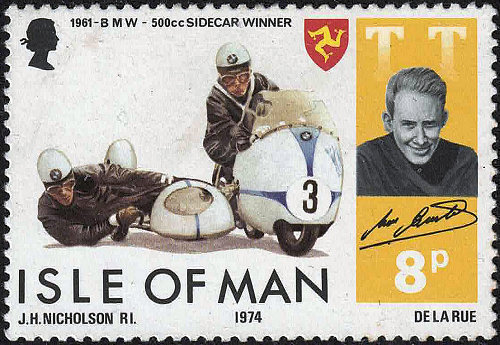
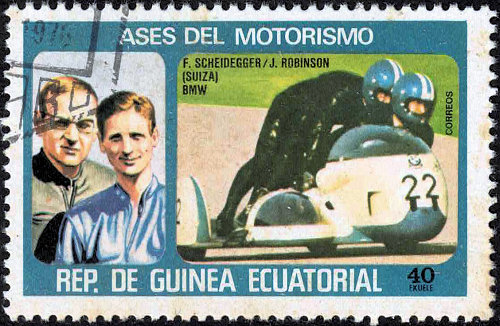
Most motorcyclists are not interested in sidecar riding. It's difficult, it's different. And just like a car you're stuck in a traffic jam. Often children are the motivation to start sidecar riding. And sometimes it clicks and in that case you never want anything else. We used to go on holiday with our two children, so the four of us, with the sidecar (without a trailer!), often through the Alps to the beach of Nice. We could take along everything we wanted, but all was lightweight and small. Including up to 21 books for the daughter. Because for her, reading continued as normal, even in the sidecar.
Next to sidecar combinations I have always riden solo motorcycles. At the moment with a Triumph Thunderbird Sport and an oldtimer Moto Guzzi Nuove Falcone.
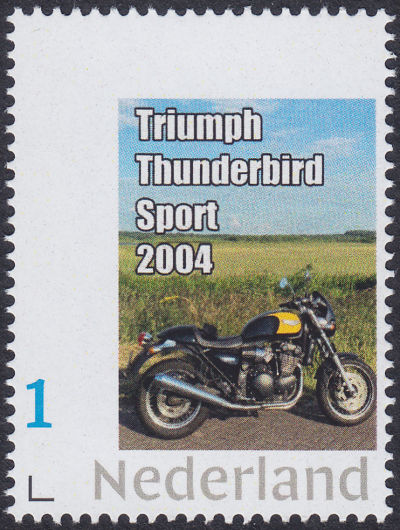

Piet Rauwerda
(This article was previously published (in Dutch) in the Dutch monthly magazine Philatelie, and has been reproduced with permission from the author and publisher. Thanks to Piet Rauwerda for making the original text and images available. Translation made by MFN
)
Top - Back to former page - Home |















